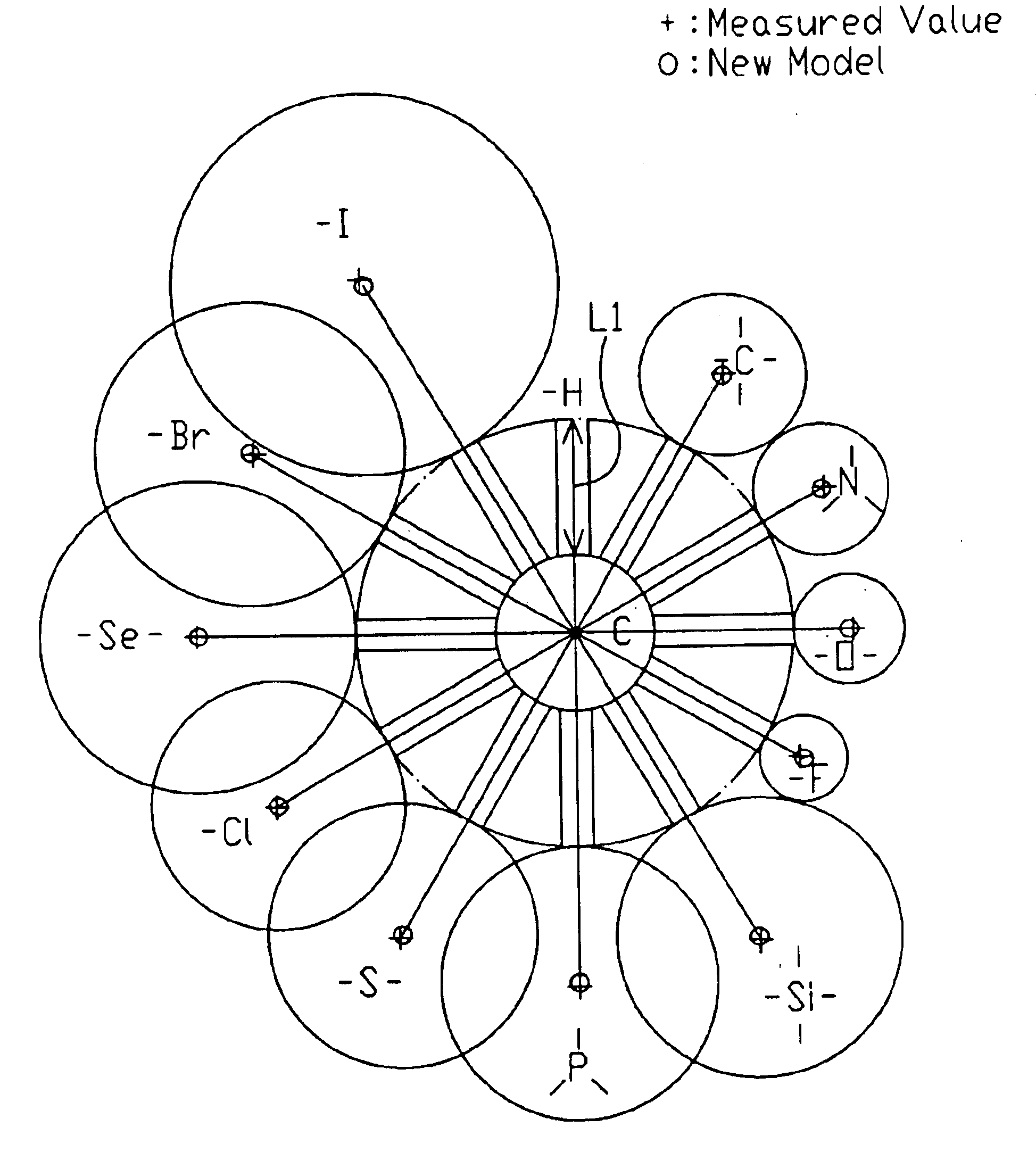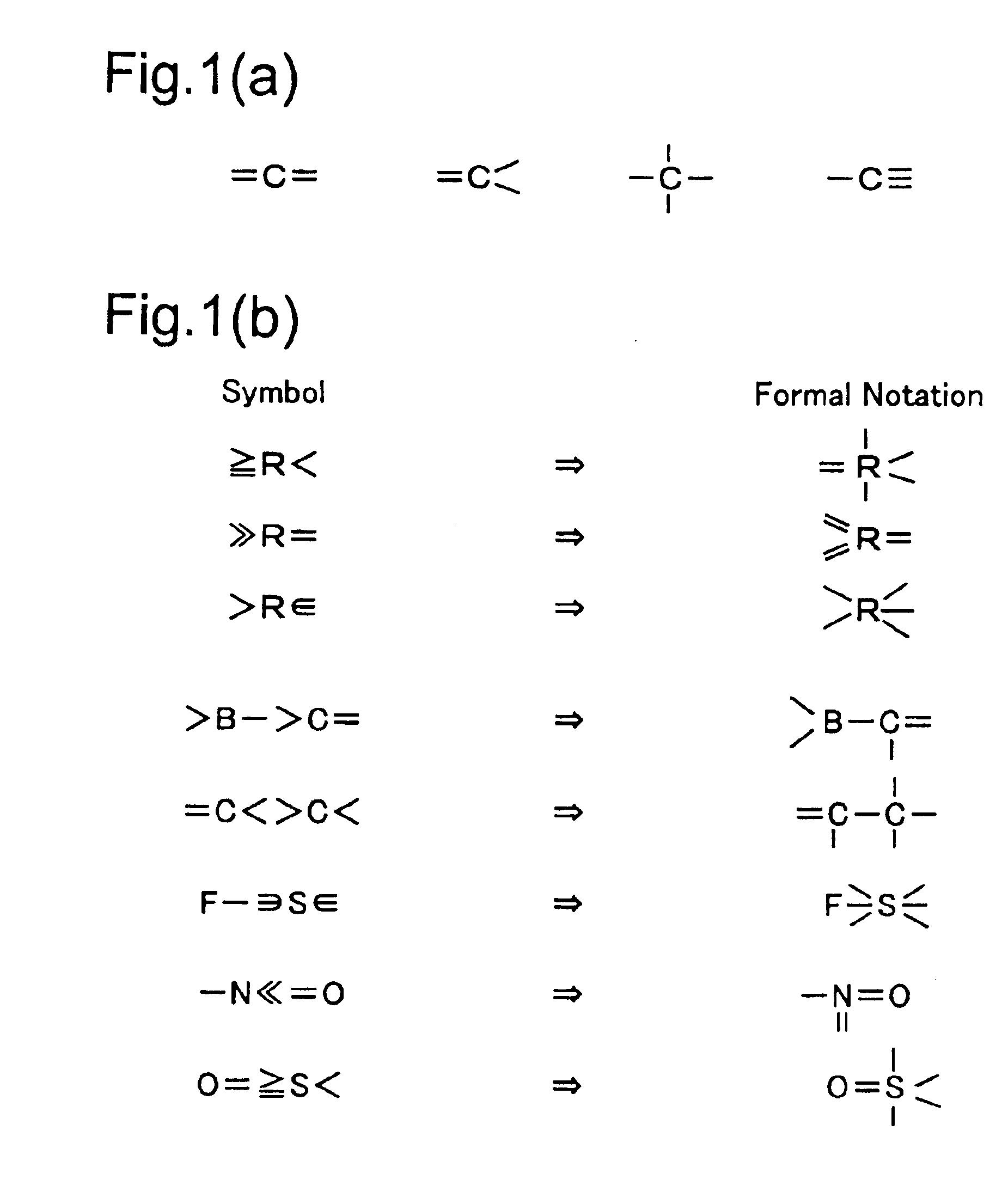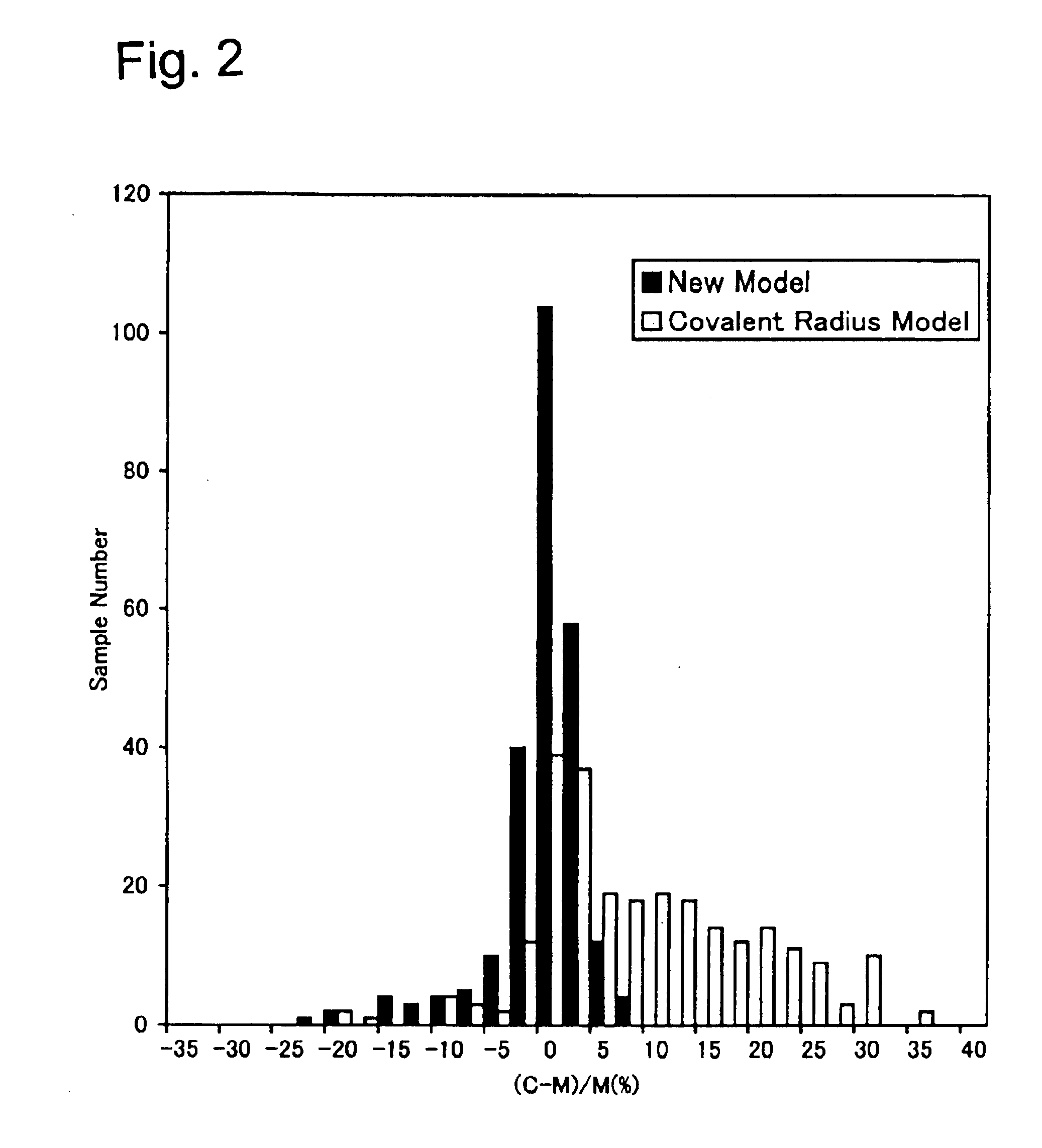Molecular model representing molecular structure
a molecular model and molecular structure technology, applied in the field of molecular models, can solve the problems of requiring a great amount of manual construction, unable to accurately express the distance between any combination of atoms, and unable to accurately represent the distance between atoms, etc., to achieve accurate visualization of molecular structure and versatility.
- Summary
- Abstract
- Description
- Claims
- Application Information
AI Technical Summary
Benefits of technology
Problems solved by technology
Method used
Image
Examples
Embodiment Construction
[0057]The present invention will be described in more detail with reference to the accompanying drawings. A molecular model represents a structure of a molecule for use in chemical study, etc. The molecular model of the present invention is designed to express the distance between atoms obtained by molecular structure analysis data as a total length of two spherical bodies representing the atoms and one bonding rod representing the bond between the atoms. It should be noted that although the following descriptions involve sizes and shapes of actual molecular, the molecular model of the present invention will be implemented by a plastic model, wood model, or a computer graphic model of visual sizes by proportionally enlarging the sizes and shapes described in the molecular level.
[0058]The molecular model of the present invention provides a general solution with versatility by (a) differentiating the radiuses of the spherical bodies based on the valence state of the atoms rather than ...
PUM
 Login to View More
Login to View More Abstract
Description
Claims
Application Information
 Login to View More
Login to View More - R&D
- Intellectual Property
- Life Sciences
- Materials
- Tech Scout
- Unparalleled Data Quality
- Higher Quality Content
- 60% Fewer Hallucinations
Browse by: Latest US Patents, China's latest patents, Technical Efficacy Thesaurus, Application Domain, Technology Topic, Popular Technical Reports.
© 2025 PatSnap. All rights reserved.Legal|Privacy policy|Modern Slavery Act Transparency Statement|Sitemap|About US| Contact US: help@patsnap.com



